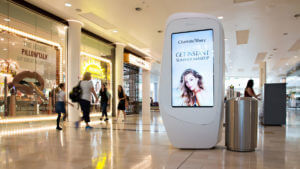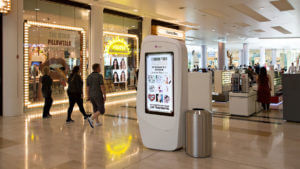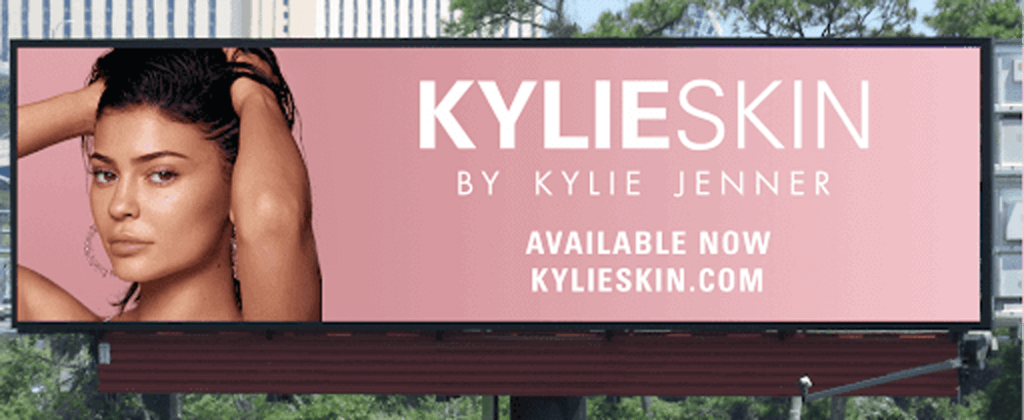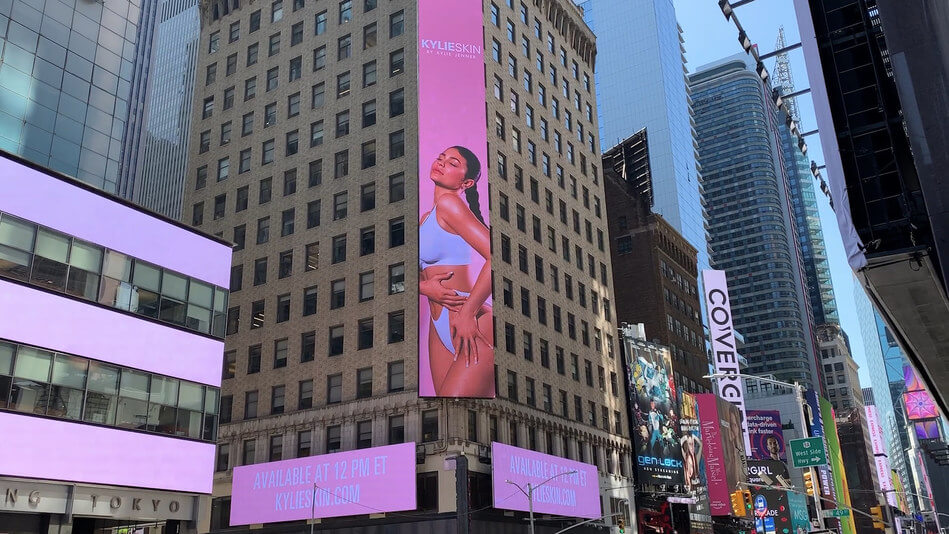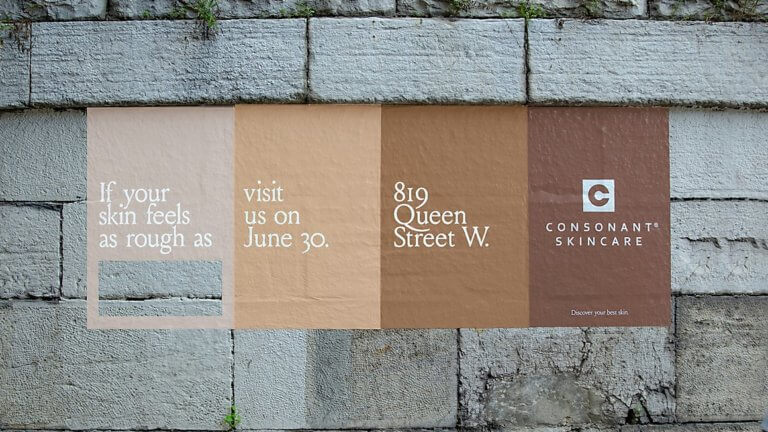
In the wake of the Pandemic, where the majority of consumers around the world were staying in their homes for copious amounts of time, many picked up a new hobby – that being skincare and beauty. At the clean beauty retailer Credo, skincare tools have more than doubled their percentage of sales, growing more than 200%. Face serums like Niacinamide have seen searches growing by 193.1%. The purple haircare line from Oribe, has seen 200% growth since March. With the combination of not being able to go to the spa or the hair salon and all this extra time to devote to skincare and beauty, it’s no surprise that these numbers have drastically increased. With all this in mind, skincare brands are now looking to advertise their new and noteworthy products in a way that will catch consumers’ eye in a bold and effective way. A lot of big-name skincare and beauty brands like Glossier and Morphe are coming out with Springtime products and they’ve decided to use Out-of-Home (OOH) advertising to do it. In this article we’ll take a look at how and why the OOH medium is the perfect fit for skincare brands and some awesome examples of how these brands are utilizing OOH.
Making A Bold Statement
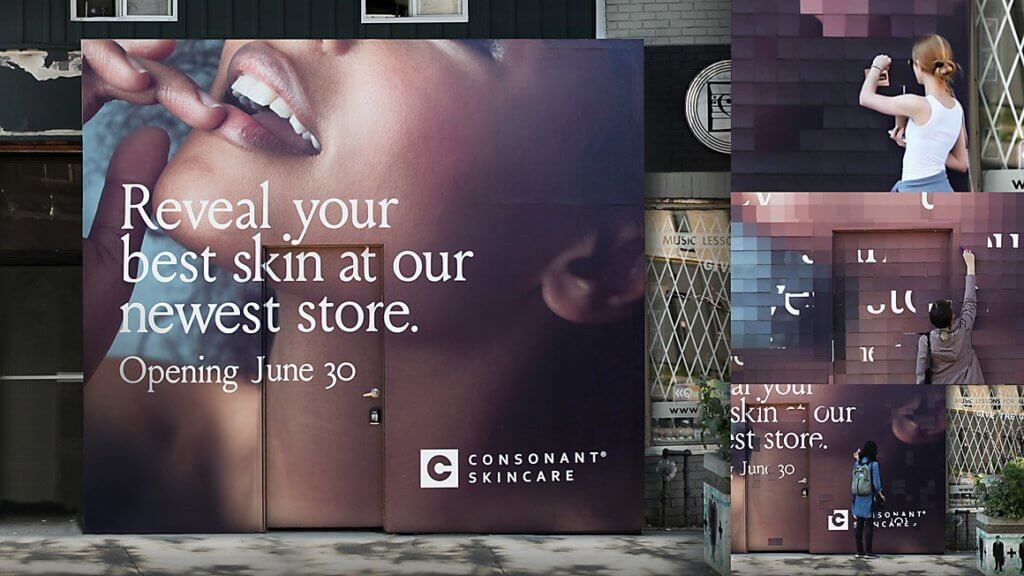
A big part of why OOH advertising is so enticing for brands is because it can send a message, one that could potentially be seen by millions. Whether it’s a political statement, a call-to-action post, a social justice act, or just to inform people about a topic, using the OOH medium will make a big impact. This is not only because an OOH ad can be as large as a 15-foot billboard or 20-story building, but also because it’s so public, it can’t be ignored. The medium is perfect for bold statements because it forces passersby to stop for a moment, look, and understand the message. It’s no wonder why one of the biggest skincare brands in North America, Glossier, has been using OOH for some time now.

Back in 2017, Glossier introduced the ‘Body Hero’ collection including a daily oil wash and a daily perfecting cream, which focused on making luxury body care accessible and affordable. But the larger-than-life billboards displayed across New York and LA did much more than display the new body care accessories. They featured nude portraits of people who exude self-love, love for the natural body and all that it encompasses, people who express individuality and beauty from within. The bold OOH campaign had people all over North America talking about it both offline and all over social media. Three years later, Glossier has recently introduced two new products to the ‘Body Hero’ collection including an exfoliating bar and a dry-touch oil mist while also adding to the idea of what it means to be a ‘Body Hero’. In this campaign, Glossier reached out to women of the WNBA who have used their bodies and their voices to drive change in their sport and in the world. This time, the campaign celebrates women as bodies that drive change, championing equality and challenging social norms. The campaign included a digital vlog of WNBA players, like Sue Bird and Seimone Augustus, presenting their skincare routines and was coupled with an OOH campaign that included 300 wild postings in 80 locations across New York, LA, and Chicago. Again, the campaign was a huge success, creating a lot of buzz and engagement for Glossier, and also stoked an even larger conversation about equality and the expression of self-identity.
The Marketing Calendar
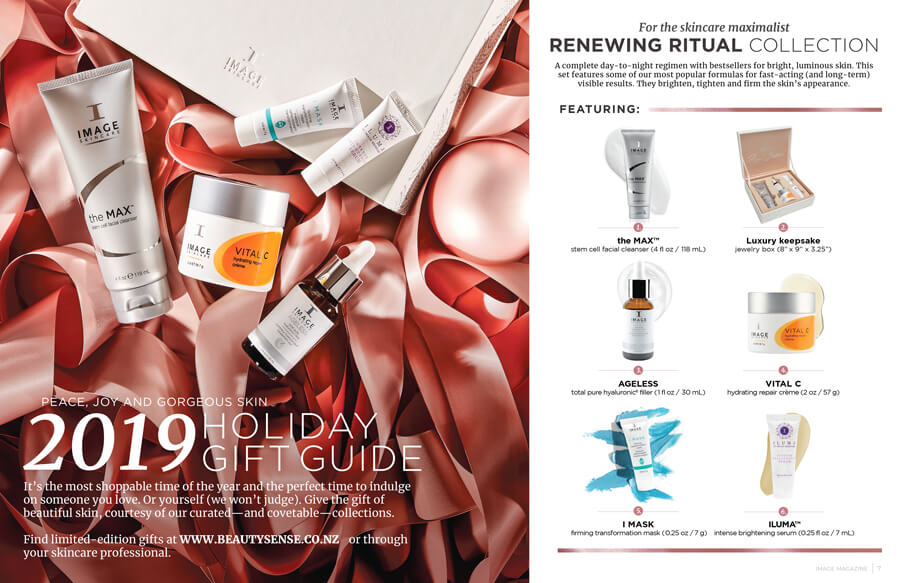
A big factor that goes into deciding when and where to advertise skincare and beauty products is the time of year. Taking into consideration seasons, holidays, traditions, are all key factors in deciding how and what to advertise in order to provide consumers with relevant messaging. For example, 16 to 24-year-olds are more likely to splurge on skincare and beauty supplies right after they get paid. The ‘treat yourself’ mentality is big amongst the younger audience, which is why it’s important for cosmetic brands to capitalize on this mentality when it comes to advertising. The DOOH medium is a great tool to use when considering the marketing calendar because it’s extremely versatile, easy to use, and can’t be ignored like online advertising. There’s nothing as targeted as walking along in a mall during the winter season, thinking about your dry skin, and then seeing a DOOH sign for a new winter skincare collection right beside the store that sells it.
Dynamic Targeting
Digital OOH (DOOH) is something that the advertising world is now acutely aware of, as it is becoming one of the most popular forms of advertising in today’s digitally driven world. According to Statista, ad spending on DOOH will increase from $6.7 billion U.S. in 2019 to $15.9 billion U.S. in 2027. This is because the medium is currently one of the most efficient and effective ways of targeting consumers. DOOH advertising allows advertisers to target specific audiences, but instead of being intrusive like online ads, DOOH can target users in a more organic way. A lot of the data that advertisers use to create DOOH ad campaigns is based largely on location and time or based on demographics and behaviours identified via anonymous aggregated mobile tracking, like the direction of travel. To gain a more in-depth look at dynamic advertising, check out this link.
For skincare and beauty brands this is a huge game-changer for engaging with consumers. Charlotte Tilbury Beauty, one of the biggest skincare and makeup brands in America, launched a DOOH ad campaign that featured weather-triggered activation to launch their new #GLOWMO collection. In collaboration with Posterscope and Cream UK, Charlotte Tilbury set up a wide range of DOOH screens, including Ocean’s large digital formats, LCDs, and six digital mall screens. The screens would be triggered by the weather including high temperatures, low temperatures, and rain, it would then suggest specific products based on the weather in real-time. Once the screens grabbed the attention of a passerby, they would then direct them to a nearby cosmetics store to check out those specific products. The campaign was a huge success, demonstrating how #GLOWMO products can create a glow moment whatever the weather may be. It was also one of the first times a beauty brand used DOOH in such a dynamic way, which brought a lot of good attention and exposure to Charlotte Tilbury.
New Wave of Programmatic DOOH Advertising
Programmatic DOOH has recently taken the advertising world by storm. Programmatic DOOH refers to the automated buying, selling, and delivery of OOH advertising. In other words, instead of using an advertiser to execute an ad campaign, computers are the ones automating the sale and delivery of the ad content. This is not to say that advertisers have become outdated or unnecessary, it just means that ad space will be bought, sold, and used in a different way. Buyers of outdoor ad space can now purchase ad space automatically, online, from wherever they are, at any time. This creates an enormously easy way for ad space buyers to put their advertisers where they want, when they want them. For example, the big screens like the ones we see in the middle of Times Square can be bought, for a considerable amount of money, and display things like recipe ideas at rush hour for all those commuters heading home to make dinner. Programmatic DOOH advertising can be extremely personal and intuitive, which is why advertisers are taking advantage of it.
To launch her new skincare products called ‘Kylie Skin’, Kylie Jenner used programmatic DOOH billboards all over America. On May 22nd of this year, Kylie launched the record-breaking national campaign, which reached audiences over 1,100 U.S. cities. The campaign used programmatic advertising to target more than 4,300 U.S. roadside digital billboards and over 1,500 digital video screens in over 200 shopping malls. Kylie knows that her online presence is already remarkable, so she wanted to do something particularly bold to gain the attention of those that aren’t online. Using Adomni’s open online buying platform for OOH screens, the ads ran all at the same time on the same day right before the products were launched on Kylie’s website. The campaign was extremely successful with Kylie Cosmetics recently becoming a $1 billion company. Programmatic DOOH gave Kylie the undivided attention of consumers all over the country, giving her new skincare line an insane amount of exposure.
Wrap Up
Skincare and beauty brands are realizing that OOH advertising is something that will take their brand to the next level. When taking into consideration the ease, efficiency, and fluidity that OOH can provide, it seems obvious why skincare and beauty brands would want to invest in it. Afterall, it is a type of product that’s constantly changing and growing – with new products and lines coming out all the time. As the OOH medium evolves and becomes more targeted, skincare and beauty brands would be foolish not to capitalize on OOH to promote their products – especially since the biggest and most popular brands are already doing so!


